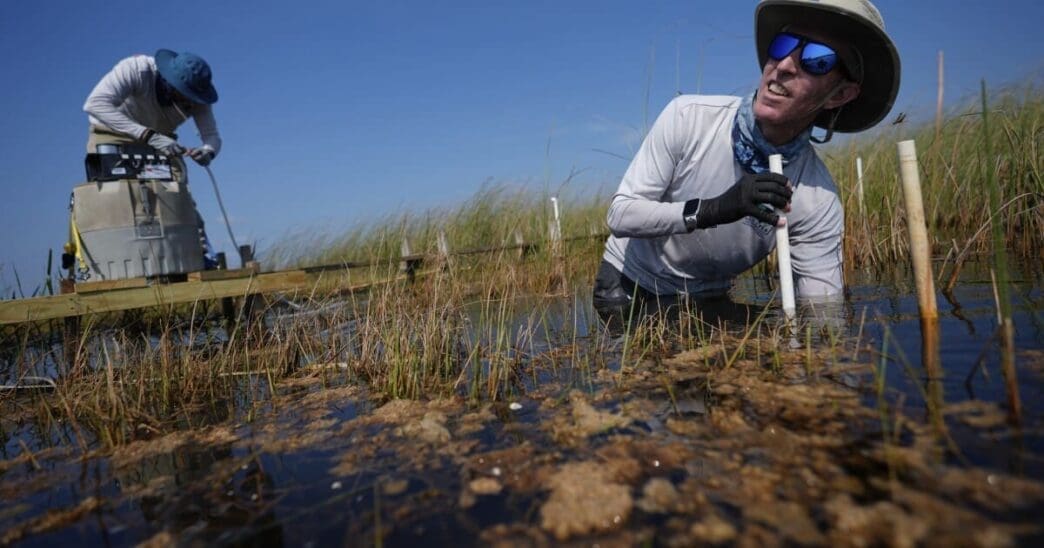In the expansive region often referred to as the River of Grass, researchers like John Kominoski are wading into the Everglades to combat challenges posed by a history of ecological disruption and the looming effects of climate change. Amidst the dense, humid air, efforts are focused on restoring this vital ecosystem that provides crucial drinking water resources for millions of Floridians.
The Everglades, once expansive, have been significantly reduced in size due to decades of urbanization and agricultural development. The construction of a highway in 1928 effectively segmented and drained these wetlands, creating persistent ecological consequences. Current initiatives are dedicated to reversing these effects by elevating sections of the highway to restore water flow in key areas such as the Shark River Slough. This project, part of a large-scale state-federal collaboration, seeks to rejuvenate the Everglades and preserve biodiversity.
Considered the largest and most ambitious ecosystem restoration project globally, efforts to bring back the Everglades have shown mixed results. Significant wildlife resurgence has been noted, with areas previously overrun by invasive species like the melaleuca tree seeing a 75% reduction. However, these projects are substantially over budget, and their future efficacy remains under scrutiny. Furthermore, only about half of the original Everglades remain, posing a continued challenge to conservation endeavours.
Restoration efforts are projected to cost around $23 billion and span another five decades. These initiatives encompass over 70 separate projects aimed at ameliorating water quality and combating threats such as saltwater intrusion and rising temperatures. Recent legislative decisions have allocated the largest single-year funding to these projects, yet budget overruns and uncertain outcomes persist.
One major ongoing effort is the Everglades Agricultural Area Reservoir Project, which aims to store and filter polluted water from Lake Okeechobee before it reaches the Everglades. This endeavor has stirred controversy due to its downsized scope and questions about its ability to significantly improve water quality. The completion of this $3.9 billion project is anticipated to help restore natural water flows, critical for both ecological balance and human needs.
Despite improvements in water quality indicators such as phosphorus levels, new threats arise with increasing salinity levels pointing to accelerated sea level rise. The region’s vulnerability to these shifts highlights the urgency for strategic planning that incorporates long-term climate impacts. Proposals are underway to develop consistent climate scenarios to better guide restoration efforts.
Among the unique challenges, the survival of mangrove populations, key to erosion control and habitat stability, is under threat. Restoration efforts, though beneficial, must now contend with the fast-shifting landscape due to climate change. Saltwater intrusion presents additional risks to biodiversity and drinking water sources, compounded by Florida’s rapid population growth.
Residents of the Everglades region, including indigenous communities, face numerous difficulties. The Miccosukee Tribe has experienced degradation of their ancestral lands, prompting advocacy for the Western Everglades Restoration Project. This initiative seeks to rectify water management missteps and restore essential ecosystem components.
Observers like Steve Davis have noted encouraging signs with returning species and revitalized habitats, indicating that despite the challenges, strategic efforts are making a tangible difference. However, the extent of these benefits varies across different parts of the Everglades.
For all the progress, significant obstacles remain. Blue-green algae blooms on Lake Okeechobee signal ongoing nutrient issues, while saltwater intrusion threatens drinking water supplies in tribal areas. Community activists stress that restoration projects primarily serve the national park, potentially at the expense of surrounding cultural and ecological landscapes.
The continual push for restoration speaks to a deeper need for climate resilience in Florida. As experts reiterate, the Everglades represent a vital test of human capacity to preserve natural environments while addressing climate challenges.
The fate of the Everglades serves as a stark reminder of the intersections between environmental stewardship and human development pressures. Ongoing restoration efforts highlight both the achievements and the ongoing challenges of one of the world’s most complex ecological recovery initiatives. As Florida grapples with increasing climate variability and population growth, the success of the Everglades restoration will serve as a benchmark for future conservation efforts. Maintaining progress requires unwavering commitment and a willingness to adapt strategies to meet evolving environmental conditions.
Source: Abcactionnews


